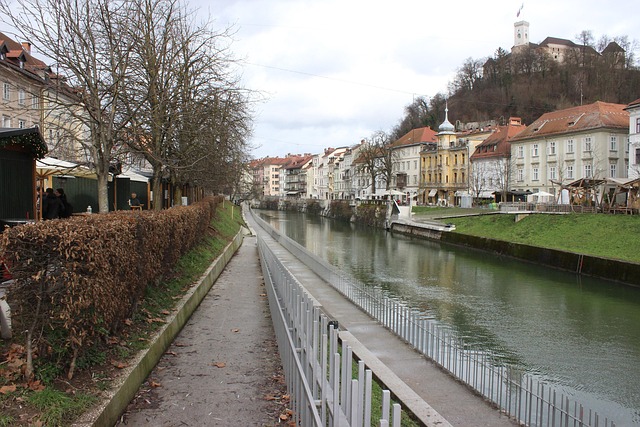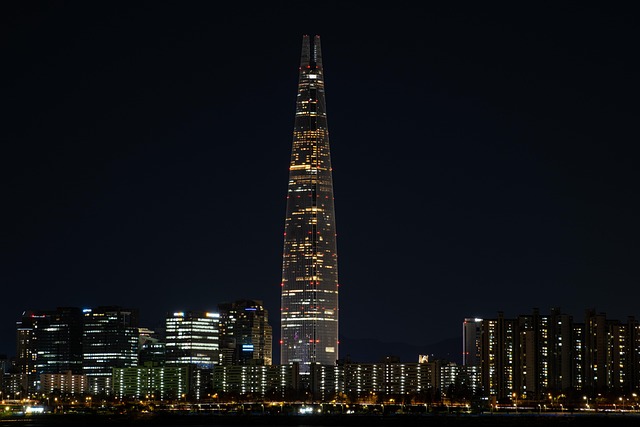Karachi faces severe air pollution due to high population density, industrial activities, and vehicle emissions. The Air Quality Index (AQI) measures pollutants like PM2.5, PM10, NO2, SO2, and O3, with levels ranging from good to hazardous. Real-time monitoring and historical data analysis help predict and combat poor air quality. Effective strategies include promoting public transport, cleaner industrial practices, urban greening, sustainable construction, and public awareness campaigns to enhance Karachi's air quality for residents and visitors alike.
Karachi, Pakistan’s bustling metropolis, faces significant air pollution challenges, as evidenced by its Air Quality Index (AQI) readings. This article delves into the intricate world of Karachi’s air quality, focusing on the AQI as a crucial metric. We explore the key pollutants contributing to the city’s AQI, highlighting the need for effective monitoring and assessment strategies. Furthermore, it offers insights into actionable steps towards improving Karachi’s air quality, providing a comprehensive guide to tackling this pressing issue.
- Understanding the Air Quality Index (AQI) in Karachi
- Key Pollutants Affecting Shahra-e-Qaideen's AQI
- Monitoring and Assessment of Karachi's Air Quality
- Strategies for Improving Air Quality in the City
Understanding the Air Quality Index (AQI) in Karachi

In Karachi, understanding the Air Quality Index (AQI) is crucial for gauging and addressing air pollution levels. The AQI provides a standardized measure of air quality, categorizing it into different levels based on pollutants like particulate matter (PM2.5 and PM10), nitrogen dioxide (NO2), sulfur dioxide (SO2), and ozone (O3). Each pollutant is assigned a value, and these are combined to give the overall AQI score, which ranges from 0 to 500. An AQI below 50 indicates good air quality, while scores between 51 and 100, 101-200, 201-300, and above 300 signal moderate, unhealthy, very unhealthy, and hazardous air quality, respectively. This index is particularly relevant for Karachi, a bustling metropolis where high populations and industrial activities contribute to elevated pollution levels.
By keeping an eye on the AQI in Karachi, residents can take proactive measures to protect their health during periods of poor air quality. This may include wearing masks, avoiding outdoor exertion, and staying informed about local pollution alerts. Moreover, it encourages authorities and policymakers to implement strategies that reduce emissions from vehicles, industrial processes, and other sources, ultimately leading to a healthier environment for all Karachis.
Key Pollutants Affecting Shahra-e-Qaideen's AQI

The Air Quality Index (AQI) in Shahra-e-Qaideen, Karachi, is significantly influenced by several key pollutants. The primary culprits include particulate matter (PM2.5 and PM10), nitrogen dioxide (NO2), sulfur dioxide (SO2), and ozone (O3). These pollutants originate from various sources such as vehicle emissions, industrial activities, construction projects, and domestic fuel burning.
Karachi’s unique geographical location and urban dynamics contribute to the concentration of these pollutants. The city’s heavy traffic load, with thousands of vehicles on the roads daily, releases significant amounts of NOx and PM. Industrial zones release toxic gases like SO2, while construction sites contribute to elevated levels of dust and PM. Additionally, during certain weather conditions, such as stagnant winds and high pressure systems, these pollutants become trapped in the atmosphere, leading to hazardous AQI levels.
Monitoring and Assessment of Karachi's Air Quality

Karachi, Pakistan’s economic hub, faces significant air pollution challenges, prompting the need for efficient monitoring and assessment systems. The city’s air quality is a complex issue due to various factors, including industrial activities, vehicle emissions, and dust from construction sites. Regular monitoring is crucial to understanding these sources of pollution and their impact on public health. Advanced technologies and tools are employed to measure key pollutants like PM2.5, NO2, and SO2, providing valuable data for analysis. This real-time assessment allows authorities to take timely measures, implement regulations, and raise awareness among residents about the quality of the air they breathe.
The monitoring process involves strategic placement of air quality stations across Karachi, ensuring comprehensive coverage. These stations collect data at regular intervals, generating detailed reports that help identify areas with poor air quality. By analyzing historical data and trends, researchers can predict pollution levels during specific seasons or events, enabling proactive interventions. Such efforts are vital for the well-being of Karachi’s residents and tourists alike, as it facilitates informed decision-making to mitigate the city’s air pollution problem.
Strategies for Improving Air Quality in the City

In Karachi, improving air quality involves a multi-faceted approach. One key strategy is to reduce emissions from vehicles, which can be achieved through encouraging public transport usage, promoting electric and hybrid cars, and implementing stricter vehicle emission standards. Additionally, minimizing industrial pollution by enforcing cleaner production methods and regularly maintaining factories can significantly contribute to better air quality.
Greening the city is another effective method. Planting more trees and creating urban green spaces not only absorbs pollutants but also helps cool the environment. Promoting sustainable practices in construction, such as using eco-friendly materials and energy-efficient designs, can also play a vital role. Lastly, raising public awareness about air pollution and its impacts is crucial; encouraging residents to adopt cleaner household habits and participate in community initiatives can collectively drive positive change for Karachi’s air quality.
Karachi’s air quality, as indicated by the Air Quality Index (AQI), is a complex issue influenced by various key pollutants. Through monitoring and assessment, it’s evident that urgent action is needed to improve the city’s environmental health. Implementing effective strategies, such as reducing industrial emissions, promoting cleaner transportation, and enhancing green spaces, can significantly mitigate pollution levels in Shahra-e-Qaideen. By adopting sustainable practices, Karachi has the potential to become a healthier and more vibrant metropolis for its residents.



